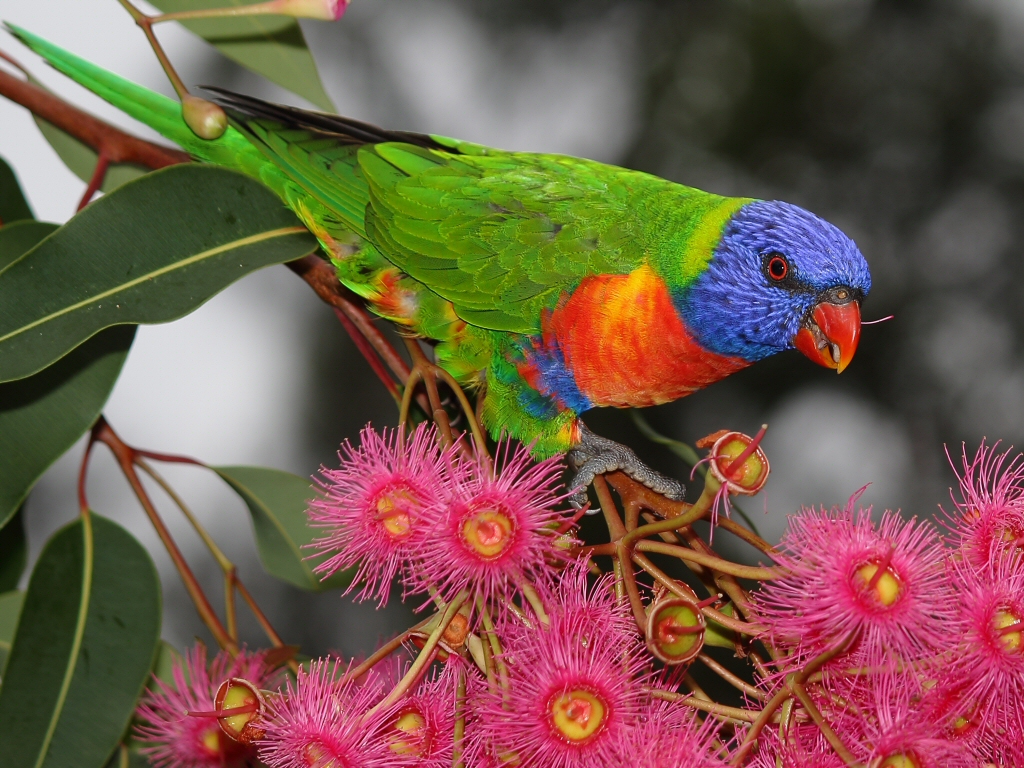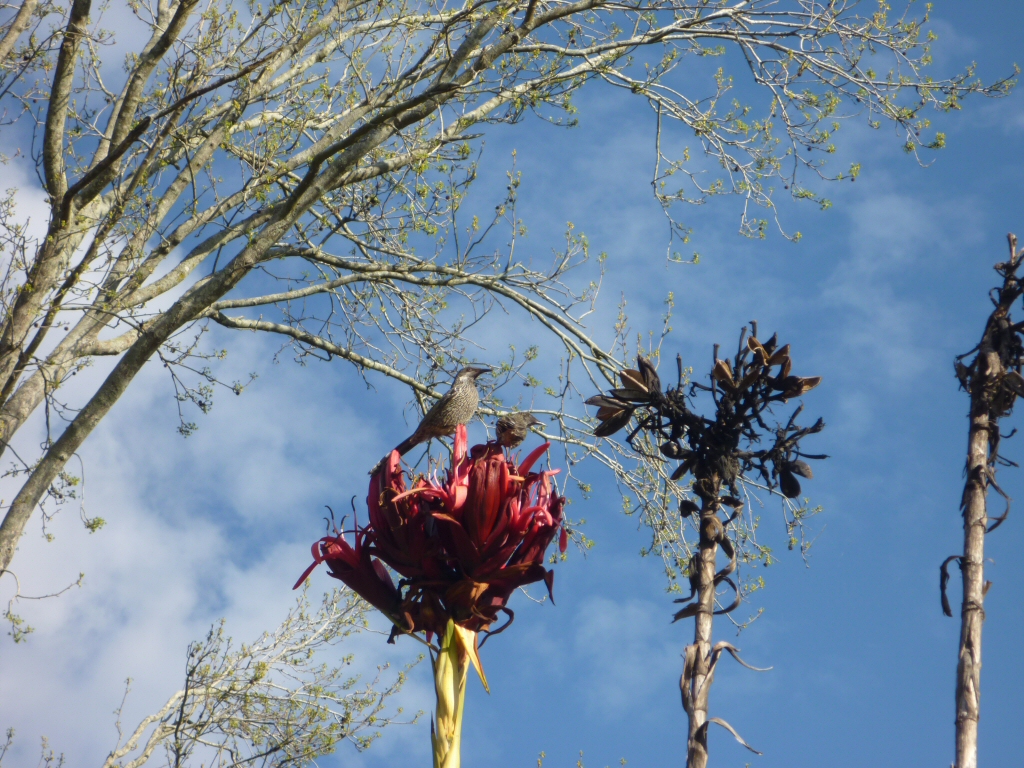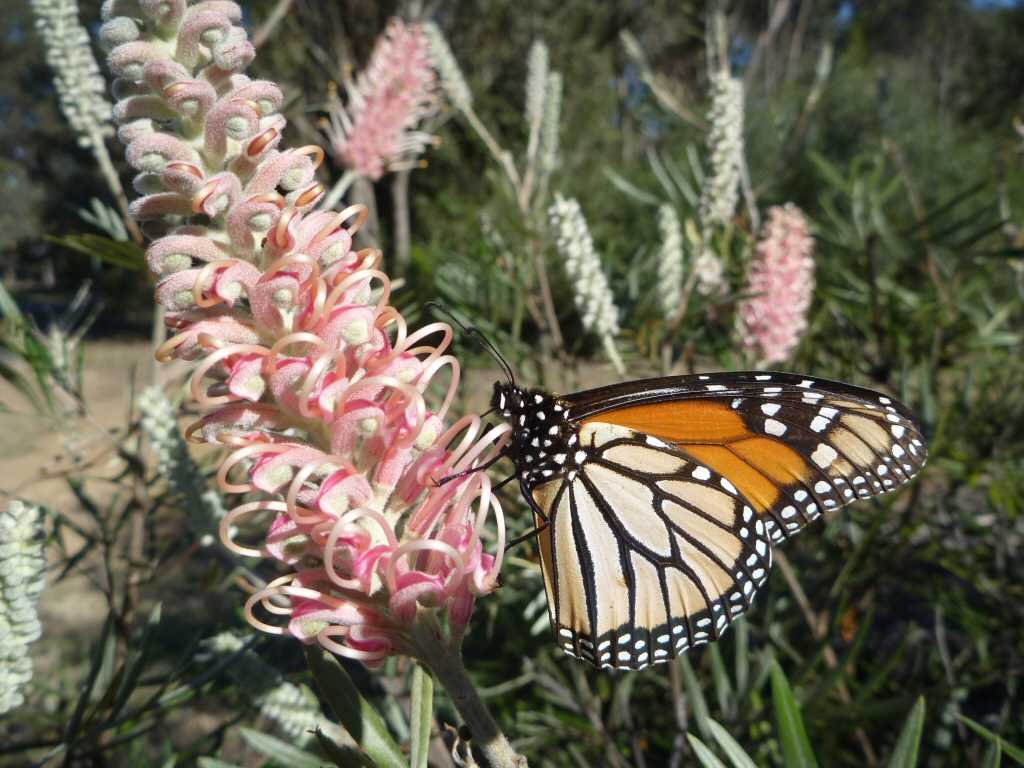Australian gardeners have a wonderful opportunity to experience the delights of our unique flora and fauna at the closest of quarters. There are areas of suburbia that are within range of bushland corridors that are frequented by a wide range of intriguing wildlife. With some thoughtful landscaping and appropriate plant selection, we can attract many of these fascinating creatures as well as create habitats and corridors to help regenerate and sustain breeding populations for future generations.
The types of wildlife that can thrive in your garden will depend on several factors:
- The proximity of adjoining bushland areas
- The presence of predators such as cats, dogs and foxes and your actions to counteract them
- Whether you design your garden as a habitat where wildlife can not only visit, but also make it their home
- To learn more about which plants attract various forms of wildlife, you can use my plant search page, which has a ‘wildlife’ field
Attracting Birds to Your Garden
Nectar feeding birds are one of the easiest groups to attract as there is a wealth of suitable plants such as eucalypts, angophoras, banksias, grevilleas, waratahs, kangaroo paws and many others. Look for tubular shaped flowers as this indicates plants that are pollinated by nectar feeders such as spinebills, honeyeaters and wattlebirds. The spectacular parrot family also includes lorikeets and rosellas which also feed on nectar as well as seeds from eucalypts, acacias, casuarinas and tea trees as well as many other easy to grow natives.
-

Rainbow lorikeet loving the Corymbia flowers
-

Wattle bird on Gymea lily flower
-

Grevillea 'Royal Mantle' providing bird tucker
Rainforest plants such as lilly pillies and blueberry ash have colourful berries that attract parrots as well as various species of native pigeons. Finches such as red-browed firetails and zebra finches will feed on the seed of native grasses such as wallaby and kangaroo grass while superb fairy wrens, fantails and thornbills are insectivorous and will greatly aid in controlling pest insects in your garden. Small birds such as these will appreciate spiky leafed plants such as Grevillea rosmarinifolia, Acacia oxycedrus and Melaleuca styphelioides to enable them to have a safe haven within your garden.
Attracting Butterflies to your Garden
Butterflies and moths have a special beauty that makes them such a delight in the garden. Most species feed on nectar from the base of flowers that is part of their role as pollinators of a wide range of plants. A few tips to get your butterfly garden started are-
- Everlasting and Brachyscome daisies not only provide nectar but the daisy flowerheads provide a great landing platform
- Do not automatically destroy caterpillars in your garden unless they are doing major damage. Caterpillars are the larval stage of caterpillars and moths.
- Other plants that are particularly attractive include Grevilleas, Pimeleas (rice flowers), Lomandras (mat-rushes) and Dianellas (flax lilies).
Attracting Frogs and Reptiles to your Garden
Frogs and small reptiles will be attracted by ponds that have a natural feel with appropriately placed rocks and water plants. They will also control mosquito larvae and other insect pests as a side benefit. Such a pond will also benefit birds and any mammals that find their way into your garden. A log or large rock in the water can provide a perch for birds to drink and bathe in safety from predators such as cats.
The pond can be as simple or ambitious as you like. A cheap and simple pond can be made from a solid styrofoam box or old kid’s paddling pool, a great project to share with the children. Be aware though that care will be needed with young children, as they can drown in even shallow bodies of water. A netting overlay can be made to cover the pond for peace of mind. Larger pools can be made with commercially available plastic ponds, or plastic or rubber linings used for excavations. Once the family swimming pool has outlived the chore of daily maintenance, it can be converted to the ultimate home wildlife sanctuary, attracting water birds as well as frogs, dragon flies and other lovely insect life.
Tips for attracting Wildlife to your Garden-
- Nesting boxes for birds and marsupials make a good substitute for tree hollows which are usually hard to provide in urban areas
- Trees or other tall perches provide spots where birds can survey your garden and decide whether they can find food and shelter in safety
- Rockeries, logs and piles of sticks will provide a habitat for reptiles such as blue-tongue lizards
- Unfortunately, bringing wildlife into your garden will create a risk if you also have fruit trees and favourite roses. A framework covered with netting can be erected at times of the year when damage is most likely, or throw over a large piece of bird netting. Sometimes birds, bats and snakes and larger lizards can get caught in netting, so it should be inspected from time to time so the unfortunate creature can be cut loose.
- Birds and window collisions. If a bird sees what it perceives to be a clear flight through a house then injury or death can result when it impacts an intervening window. Blinds, curtains and decorative objects placed behind the window will help to discourage this accidental problem.
- Do not use chemicals in your garden. As well as the possibility of causing acute toxicities to wildlife that could result in immediate death, there is also the problem of a long term build up of toxic substances in local wildlife. In many cases birds and reptiles will provide adequate control of pests such as snails and aphids without the need for chemical measures.
- Supplementary feeding can be provided at times of year when natural supplies are scarce, however, it should never become more than that. The healthiest course is to try to provide natural food sources for as great apart of the year as possible.
Sources of Food for Garden Wildlife in Winter
A number of Australian plants can provide winter nourishment such as most correas (also known as native fuchsias), various banksia species and ever blooming grevilleas such as ‘Robyn Gordon’, ‘Superb’, ‘Moonlight’ and ‘Misty Pink’. Autumn flowering wattles such as Acacia iteaphylla, A. linifolia and A. terminalis along with native grasses such as kangaroo and wallaby grass will provide seed through the winter months.
Many exotic garden plants such as camellias, red hot pokers, fuchsias and members of the hibiscus family and abutilon will provide food sources for a number of native bird species.
In addition, a number of invasive species such as jasmine, ivy and even blackberries can and do provide nesting and sheltering sites for birds and possums. Other less obvious weed species such as winter grass also provide seed that supplements the diet of smaller birds. If you intend to replace these weedy species it is a good idea to gradually remove them and replace with more environmentally friendly plants, rather than leave gaping holes in the landscape.
Land for Wildlife
The ‘Land for Wildlife’ scheme began in Victoria in 1981 to further encourage landholders who had been voluntarily setting aside areas of their properties as habitat for native fauna. In the 1990’s the scheme rapidly spread nationally to every state such that over 9,000 properties are assisted by a variety of government and community bodies that have taken up the challenge of administering the scheme. The idea of the scheme is to educate and support landholders in preserving habitat for native plants and animals. Participants in the scheme receive advice on financial and other incentives available to landholders involved in nature conservation; workshops, field days and other activities; advice and assistance with practical management issues such as bush regeneration. There are no fees involved in joining; it does not alter the legal status of a property in any way while all rights to multiple land use over the area are preserved. Landholders may withdraw from the scheme at any time and it does not convey any right of public access. A ‘Land for Wildlife’ sign is provided free of charge to be placed at the entrance of the property. Contacts can be found in each state by searching the internet for Land for Wildlife followed by the appropriate state.
Habitat Stepping Stones
If you live in Sydney, there are 6 councils who are involved with an innovative program called the Wildlife Habitat Stepping Stones Project, which you can check out and get involved with. Even if you don’t live in Sydney, visit the website to pick up hints and tips there.


